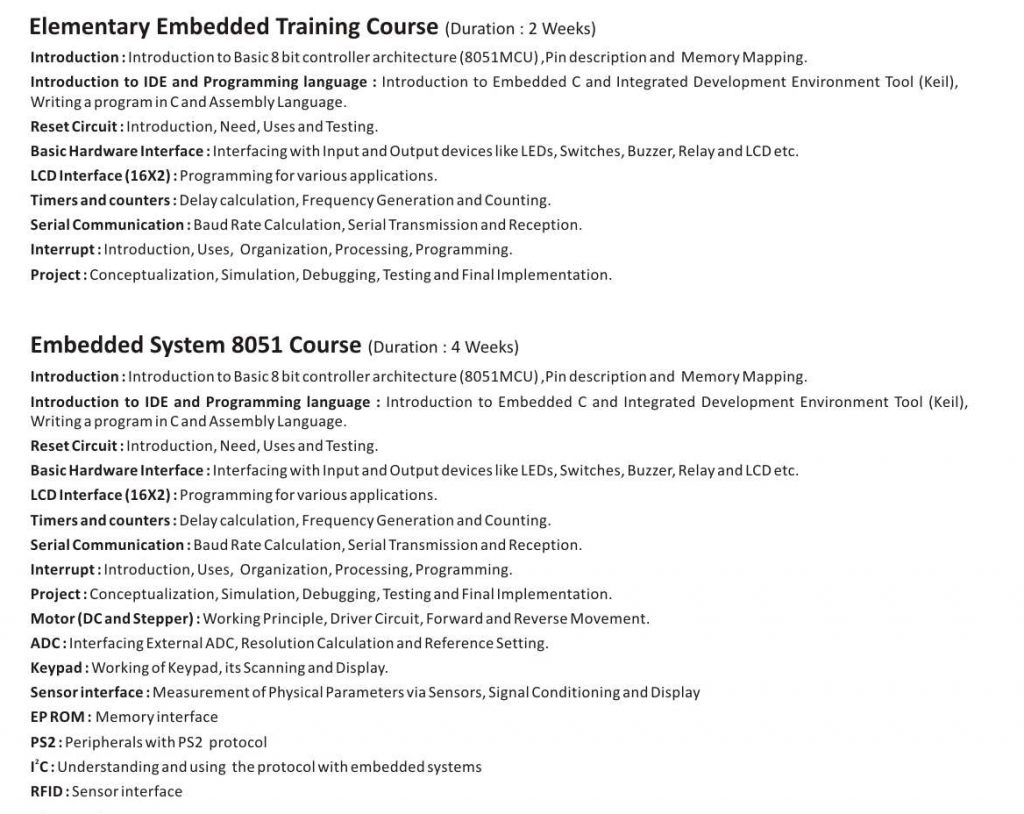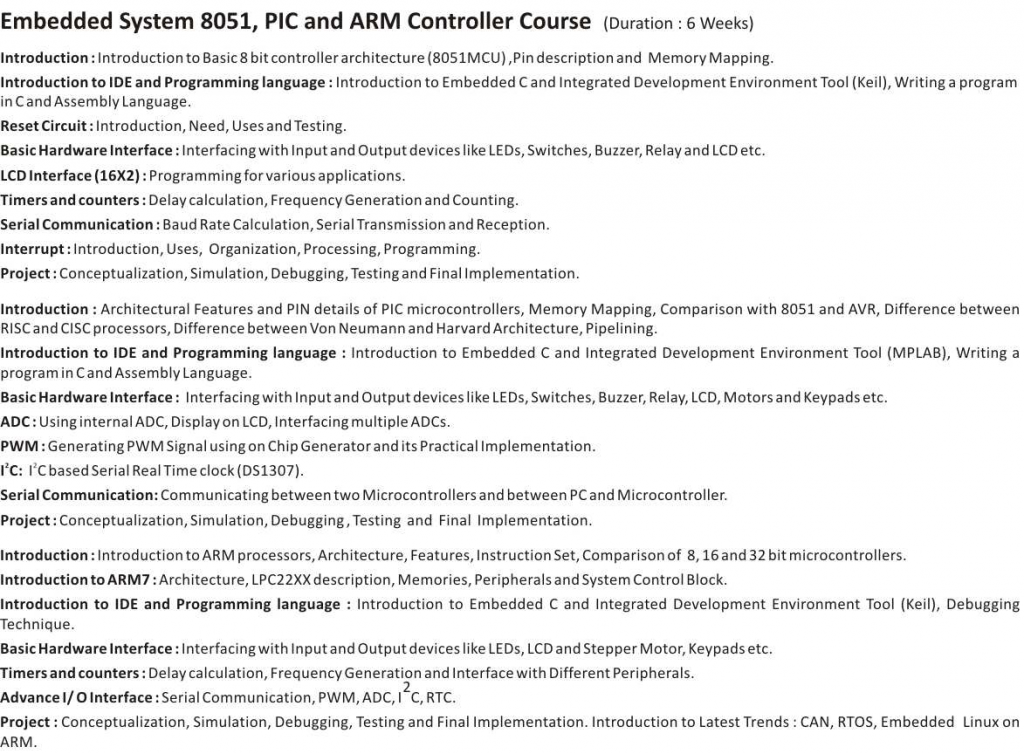Embedded Design and Development
 The growing features in electronics products adds complexity and challenges for design engineers. The survey states that writing, debugging and verifying consumes largest marker share of embedded development boards.
The growing features in electronics products adds complexity and challenges for design engineers. The survey states that writing, debugging and verifying consumes largest marker share of embedded development boards.
Engineers have to face various, sometimes even contrary challenges in terms of time, cost and customer requirements. As an embedded engineer,
it is often your duty to complete projects under severe time constraints.
Given this task, how can you proceed from concept to specification,
prototype and final product with maximum efficiency and design integrity? In other words, how to meet best the time and cost objectives while ensuring the best quality of your embedded design?
More complex software needs more capable tools, not only to write the code in the first place, but also to make sure it does what the developer intended. And when the software is used in a critical elements of a system, it may well need to be written to a particular standard and tested against it. Then there are operating system issues, as well as security concerns.
Why Study Embedded Systems?
Embedded systems are playing important roles in our lives everyday, even though they might not necessarily be visible. Some of the embedded systems we use every day control the menu system on television, the timer in a microwave oven, a cell phone, an MP3 player or any other device with some amount of intelligence built-in. In fact, recent poll data shows that embedded computer systems currently outnumber humans in the USA. Embedded systems are a rapidly growing industry where growth opportunities are numerous.
First reason why we need embedded systems is because general-purpose computers, like PCs, would be far too costly for the majority of products that incorporate some form of embedded system technology. Another reason why we need embedded systems is because general-purpose solution might also fail to meet a number of functional or performance requirements such as constraints in power-consumption, size-limitations, reliability or real-time performance etc.
Here are list of courses available from leading institutes..
Scientech Open Learning System
Embedded Design Courses
Neona Embedded Labz
Neona Embedded Labz Training division is focused on sharing competitive technical knowledge with young and dynamic students who are poised to become the innovative engineers of tomorrow.
Modules Brief Description:
1. Java Brush Up
Knowing Java is vital to developing applications on Android. Strengthen the basics and accelerate app development on Android.
2. Introduction to Android
Android Overview, Anatomy & Physiology Android Versions & Features Overview of Stack
3. Installation & Setting up Dev Environment
SDK Overview Installing SDK & Setting up Programming Environment Creating your first project
4. Application Components
Activities, Services, Broadcast Receivers, Content Providers.
5. Layouts & Views
Declaring Layouts in XML Exploring all Layouts Creating Activities with different Layouts.
6. Applying Styles & Themes
Faster and organized XML Designs.
7. Menus
Defining Menus Creating an Options Menu, Context Menu
8. Handling UI Events
Learning to use the Android UI Event Subsystem.
9. Dialogs
Alert, Date Picker, Time Picker, Progress Dialogs.
10. Toast Notifications
Basic Toast Notification Positioning Toasts Custom Toasts
11. Widgets & Other Views
Explore all the commonly used Android widgets.
12. Application Resources
Providing Resources, Accessing Resources, Localization.
13. Intents & Activities
Creating & Handling Intents Intent Filters
14. Audio Playback
Preparing Media Audio Playback Video Playback
15. Code Debugging
Learn effective techniques of debugging . Speed up application bug fixes.
16. Demo Project
17. Task Management
Saving & Restoring Task state.
18. Handling SQL Database
Write, Store, Retrieve & Edit Database contents.
19. Content Providers
Media Content Provider
20. Text to Speech
Make your applications talk to you!!
21. Status-bar Notifications
Inform users about tasks/activities running in the background. Use audio/visual/haptic feedback.
22. Locations & Maps
Accessing Navigational capabilities of Android & Google Maps and built-in hardware.
23. Live Project
Convert your dream project into a Real Android Application. Providing Quality Training on the latest and innovative technologies with plenty of practical hands-on exposure.
Courses by Neona Embedded Labz:
Android Training
Advanced Diploma in Android Application Development
Course Duration :
1Month, 2 1/2 Months & 4 Months .
Salient features
- 6 Mini Projects
•Animation
•Your Application on Android Market etc;
•1 Main Project
•Faculties with Industrial Exposure
.
Eligibility
Java basics, BE BTech IT/CSE, MCA, MSc in Computer Science
Admission Process :
This course requires the prospective students to go through an Online Test . .
Embedded Systems Training
Advanced Diploma in Embedded System Design
Course Duration :
1Month, 2 1/2 Months & 4 Months .
Salient features
- 6 Mini Projects
•1 Main Project
•16bit – 32 bit controller
•ARM Controller
•Linux Device Driver
•Porting Linux & Android
•RTOS etc.
.
Eligibility
B.E/B.Tech, M.Tech, M.sc (electronics branches), Diploma (electronics branches)
Admission Process :
This course requires the prospective students to go through an Online Test . .
Sandeepani – School of Embedded System Design
‘Sandeepani – School of Embedded System Design’ is the training division of CoreEL Technologies (I) Pvt Ltd and a renowned institute for higher learning in Embedded System Design and VLSI technologies.
The Professional Development Courses help in honing the basic skills across platforms and methodologies while the Corporate Trainings drive enablement on specific tools and technologies. Sandeepani’s USP lies in being able to deliver comprehensive yet customized courses that improve proficiency on basic concepts as well as advanced tools and methodologies.
Since inception in 1992, Sandeepani has trained over 5,000 working professionals and many more students on HDLs, FPGA design, Verification and System Design. Some of the key customers for corporate trainings include Startupcompanies, Captive MNCs, Design centers, Defense & Aerospace companies.
Professional Development Course in Embedded Software Design:
| Course Duration: 16 Weeks | Course Structure and Outline | |
| Mod. | Module Title | What You Learn |
| P1 (5 Days) |
Basic Electronics Review |
|
| P2 (5 Days) |
Digital Design Review |
|
| P3 (6 Days) |
Programming in C |
|
| C1 (1Days) |
Introduction To Embedded Systems |
|
| C2 (6 Days) |
Programming the 8051 Microcontroller |
|
| C3 (13Days) |
Advanced C Programming |
|
| C4 (12 Days) |
Programming & Interfacing with ARM7-TDMI based Microcontroller |
|
| C5 (12Days) |
Embedded Linux |
|
| C6 (5 Days) |
Application Development suing μC/ OS -II |
|
| C7 (15 Days) |
Course Project | Course project |





